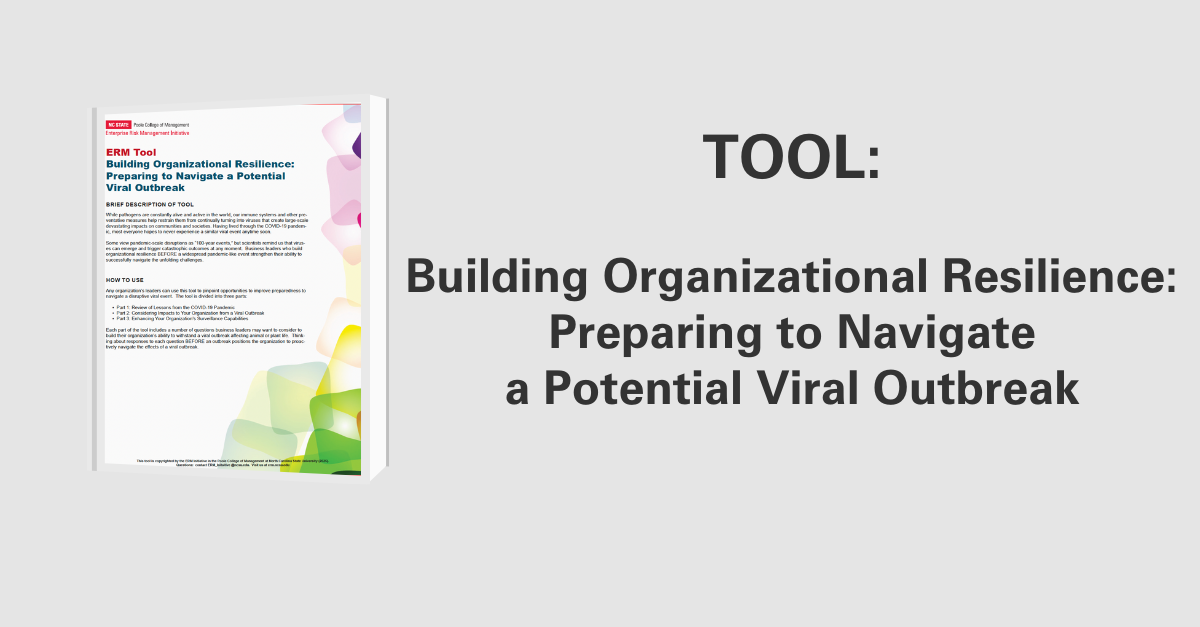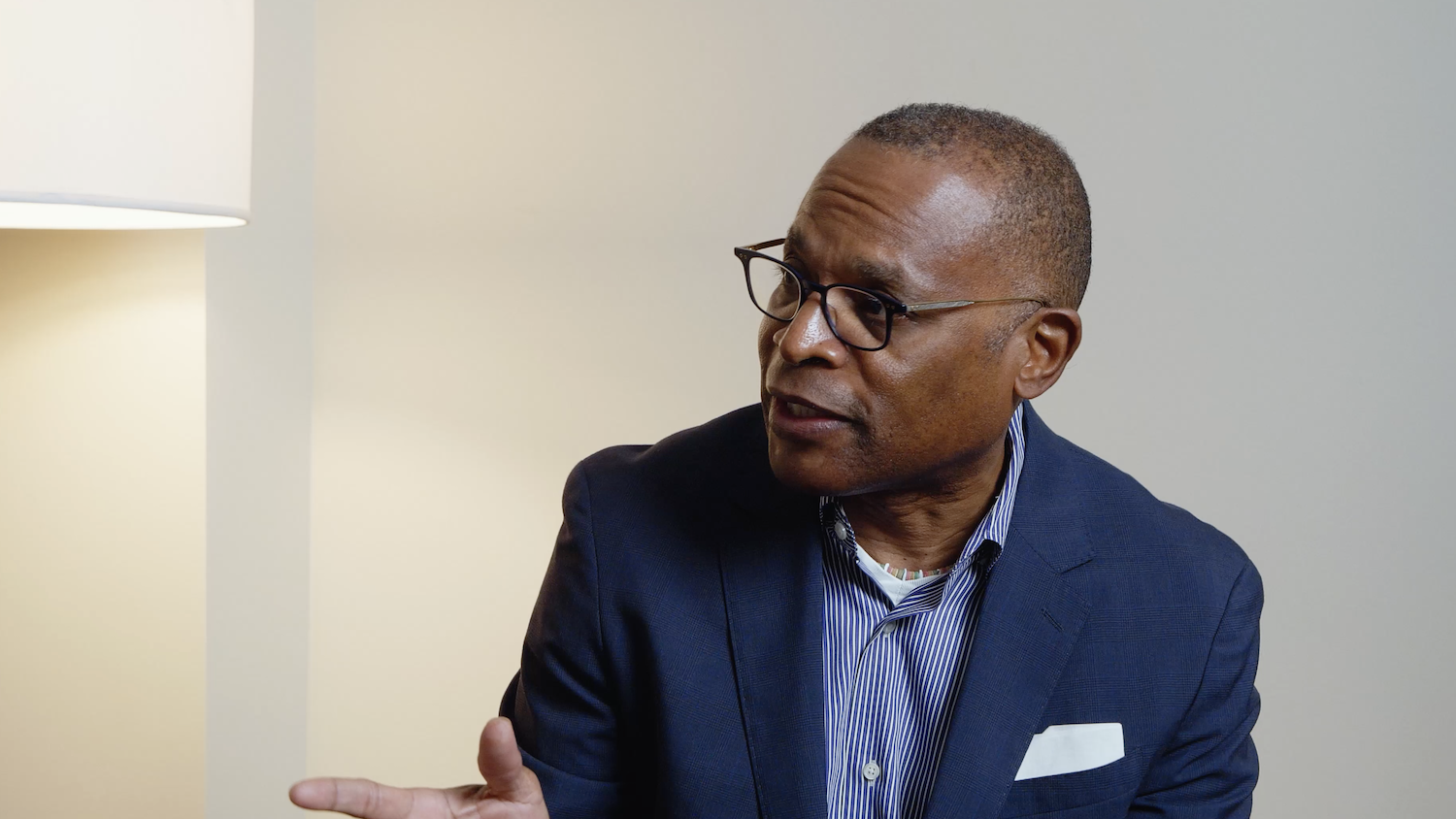Recognizing the Risk Impact of an Aging Workforce
This article by Beth Ritter, Associate Professor of Practice in the Poole College of Management at North Carolina State University, discusses the implications of an aging workforce. According to the Bureau of Labor Statistics in their most recent ten-year labor force and employment projections, the number of individuals aged 55 and above in the labor force will grow from 35.7 million in 2016 to 42.1 million in 2026. Organizations will experience this impact in different ways based on their size, growth, industry and historical hiring and layoffs.
In June 2018, my colleague, Robert Clark, and I surveyed ERM leaders across the U.S. to obtain their views about the impact an aging workforce may have on their organizations. The objective of the survey was to determine whether risk managers thought an aging labor force and its impact on the retirement decisions of older workers posed significant risks to the operations of their organization. This summary highlights some of the key observations gleaned from the 142 respondents who participated in our survey.
Respondents represented all types of organizations, with about 37% associated with publicly-traded companies, 26% at privately-held, for-profit enterprises, and 37% at not-for-profit organizations. So, we had a nice representation of all types of entities.
Our first key observation is that the potential that an organization will lose talented older workers in the coming years is viewed as both a short and long-run risk to organizations.
Fifty-seven percent of the risk managers agreed or strongly agreed with the following statement “The risk of losing talent and knowledge due to anticipated increases in employee retirement is a significant risk concern for our organization in the near term (one or two years).” Over 70% of the respondents indicated that the risk of losing talent and knowledge was a significant risk in the next 3 to 5 years.
The second key observation is that one-third of risk managers believe that loss of talent in the coming years is a significant risk to their organizations.
Thirty percent believe that this risk was more significant than other labor market risks for their organization while another 53% replied that this risk was similar to other labor market risks for their organization.
Next, Concern over this labor market risk is leading about a third of organizations to modify their compensation and employment policies to encourage older workers to remain on the job.
Around 30% of the respondents agreed or strongly agreed with the statements that their organization was adjusting compensation to entice employees to stay longer, modifying benefits to make it more attractive to stay longer, and introducing new employment policies that increase flexibility and incentives for employees to stay longer. In contrast, 47% agreed or strongly agreed with the statement that their organization was not making any such adjustments.
When asked to comment on the statement “Our organization is introducing new employment policies that increase flexibility and incentives for employees to stay longer” 35 percent agreed or strongly agreed while 40 percent disagreed or strongly disagreed.
These overall findings suggest that some organizations have identified talent-related risks that may be tied to aging workforces and are developing responses to help manage the impact of that risk for their organizations. Other organizations may not believe they face a significant impact associated with the risk of an aging workforce or they may not realize there may be an emerging risk on the horizon related to this.
To help organizations consider whether an aging workforce may or may not be an emerging risk issue, here are some actions that firms can consider to begin to understand their risk associated with the aging workforce:
- Run the numbers and check your data. How many employees do you have that are approaching retirement age? Are those employees in key growth areas for your entity? Consider the impact if fifty percent of those eligible chose to retire this year? Consider if all retirement eligible stayed for another 15 years?
- Review your employment policies and programs?Do your plans and programs encourage early retirement or do they discourage staying after a certain age? Compare what your organization needs to what your policies support.
- Evaluate both your knowledge management and knowledge transfer programs and practices. Consider what knowledge would be lost if employees leave and how you can retain that knowledge. Consider formal mentoring relationships with clear and specific objectives and deadlines to transfer the data to others.
- Consider if creative work arrangements could support your workforce plan needs. Could job sharing or phased retirement programs be creative ways to engage employees?
Original Article Source: “Recognizing The Risk Impact of an Aging Workforce”– Beth Ritter, NC State University ERM Initiative, February 2019
Beth Ritter is an Associate Professor of Practice in the Department of Management, Innovation, and Entrepreneurship in the Poole College of Management at North Carolina State University where she teaches and conducts research about human resources and talent management issues. Prior to joining NC State, Beth was a senior vice president of human resources at Burt’s Bees, which is now a part of Clorox.
- Categories:
- Types:


